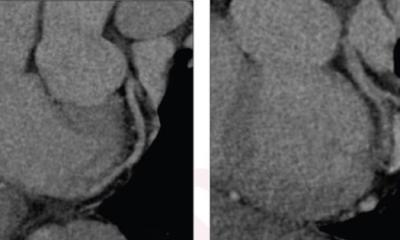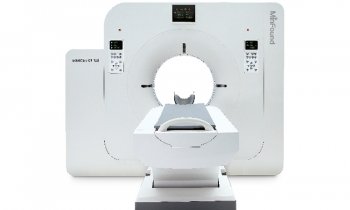Article • Preparing for the unpredictable
The role of radiology in mass casualty incidents
CT has a critical role to play in management of mass casualty incidents with the ability to image patients from head to toe, offering a rapid overview for clinicians. The benefits of CT were outlined by Dr Elizabeth Dick during an ECR session examining the role of radiology in the management of mass casualty incidents, terror attacks and assaults.
Report: Mark Nicholls
“Mass casualty incidents – whether terrorist attack or other – are by their nature unpredictable, so we have to be ready for them,” said Dr Dick, who is President of the European Society of Emergency Radiology. “Part of this is thinking ahead about what you would do or see.”
Five types of mass casualty incident

In focussing on CT findings, Dr Dick went through five different types of mass casualty incident: vehicle attack (such as occurred in Nice); bomb blast or incendiary device (as experienced in terror attacks in Madrid and London); gunshot wounds and how to understand the ballistics and effect on the body; stabbings; and less common scenarios including radiation, chemical or biological attack.
Based in London, Dr Dick is a Consultant Radiologist and Honorary Senior Lecturer at Imperial College NHS Healthcare Trust, and was part of the trauma team that responded to the 7/7 attacks in 2005 and the more recent events of 2017; including Westminster Bridge, London Bridge, and the residential flats fire at the 24-storey Grenfell Tower, which saw 72 people killed and 70 injured. “As a major city, London has always had to deal with mass casualty events so anyone who lives in London has to be prepared,” she added.
Speaking to Healthcare in Europe ahead of her presentation, Dr Dick outlined the benefits of CT in such scenarios: “Our trauma pathway means that we can get patients through CT within half an hour of arriving in the hospital, so that the patient can be imaged from head to toe. In patients with complex injuries, getting a speedy overview of every injury is invaluable. It also means that all the different teams (for example, Neurosurgery, ENT, Orthopaedics) can be quickly alerted if needed.” She said having three CTs in the hospital offers considerable flexibility, yet there are still potential challenges.

Middle: High pressure primary bomb blast wave can cause ‘blast lung’.
Right: Penetrating injuries can have small entry wounds but significant depth causing haemothorax here. A wound in this region has a high risk of diaphragmatic injury too
Prioritisation is necessary
Dr Dick continued: “In situations where there are many patients, you have to prioritise who goes to CT and rely on plain films more than in normal circumstances. It is important not to be overly reliant on CT.”
When a mass casualty event happens, the speed of events and pressure of the scenario means that decisions have to be made quickly
Elizabeth Dick
Key learning points from the session included the specific injury patterns of bomb blasts, penetrating injury and gunshot wounds. “Many people will not have vast experience of all three (thankfully) but they need to be able to search out certain patterns, for example with knife wounds understanding that the surface wound can be very small and mask an extensive deeper injury crossing several compartments,” added Dr Dick. “The over-riding take home message is 'be prepared'. Hopefully the knowledge I will be sharing will only rarely be needed,” she said. “However, when a mass casualty situation occurs, medics need to rapidly retrieve the knowledge and apply it. The best way to do this is to have some understanding beforehand. When a mass casualty event happens, the speed of events and pressure of the scenario means that decisions have to be made quickly. The more knowledge you have, the better.”
Other presentations in the session looking at the role of radiology in the management of mass casualty incidents focused on: preparations and standards before the disaster, capabilities of the emergency radiology department, protocols, the importance of the disaster management plan, and the role of interventional radiology in mass casualty incidents.
Profile:
Dr Elizabeth Dick is a consultant radiologist and honorary senior lecturer at Imperial College NHS Healthcare Trust with expertise in body MRI, emergency, trauma and musculoskeletal radiology. At Imperial College Healthcare she is head of trauma radiology as well as Associate Director of Medical Education. She is the President of the European Society of Emergency Radiology and Past President of the British Society of Emergency Radiology and also Visiting Professor at the University of Sydney (2019-2020). Her research interests include trauma imaging, medical education, digital learning and she is a keen promoter of initiatives to increase diversity and equality of opportunity in medicine.
16.07.2020











